Hunting Muskox In An Ancient Land
The Steep Mountainsides, Rugged Tundras of Northern Greenland Are Home To This Impressive Bovid
By Glenn Bingham
I was blissfully hiking along, as we had done for the past eight hours, trying to determine if I was too warm or too cold. Suddenly, the guide stopped and crouched down. He turned and said that he had seen a bull muskox disappear behind a boulder in the chute ahead. He hadn’t gotten a good look, but he said he felt like it was a good bull. In a few moments, our leisurely hike turned into a stalk.
The wind was marginal, but a short circle above the bull appeared to be our best bet to get a better look. As we circled, the wind unexpectedly switched into our favor. Such is hunting in the mountains. We crept slowly up the slope and over the hill. The bull materialized below us, only 45 yards away.
This journey started two years earlier. Having a penchant for hunting remote, inaccessible regions, I was on the lookout for a unique adventure. Greenland definitely fit the bill. After some research, Bowhunting Greenland, run by Frank and Mette Feldmann appeared to be the place to go for big mature muskox. It was interesting to hear that Frank had been instrumental in bringing bowhunting to Greenland several years ago.
They primarily cater to bowhunters but will take a few rifle hunters each year as well. The Feldmann’s have also invested in a new very remote hunting area, accessible only by helicopter. This area has been very lightly hunted, if at all in recent years. With the pandemic delaying everything for a year, it just so happened that our group would be the first to hunt the area.
Leaving from Syracuse, N.Y., I flew to Greenland where our group was met in Kangerlussuaq by Mette, who quickly got us organized and over to the helicopter hangar. From there, it was a relatively short flight to camp. As we flew over the terrain I was struck by how rugged and ancient the landscape looked, with bare steep mountains, and rocky valleys sliding below us. We even spotted a few groups of muskox.
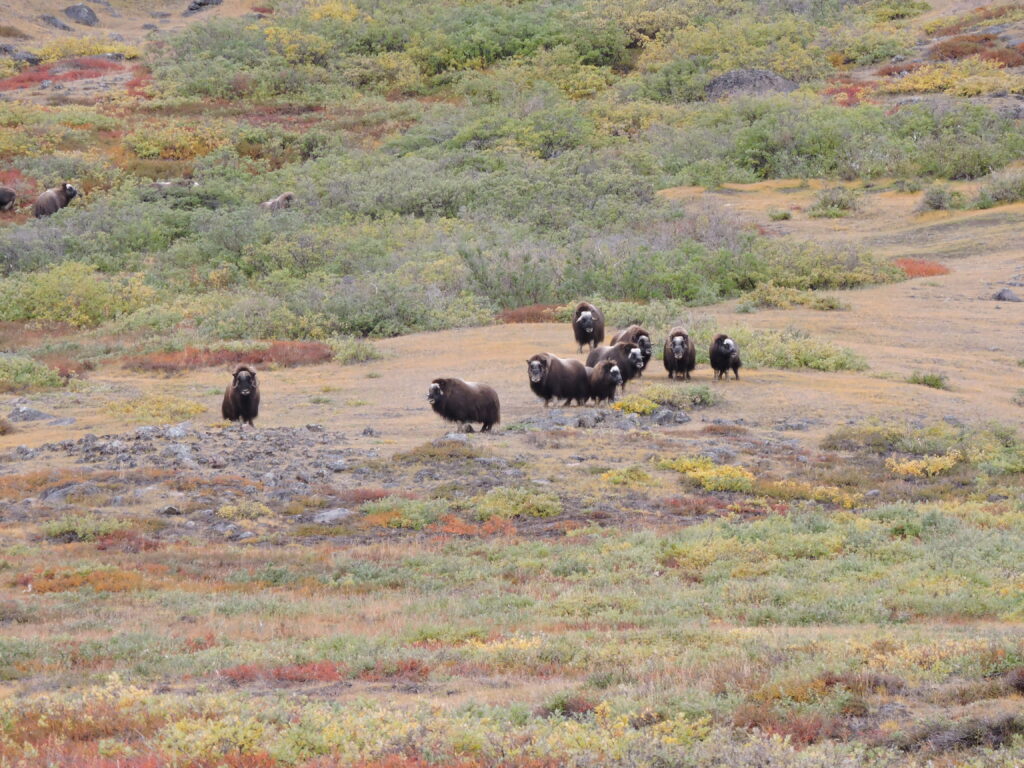
We dropped off four hunters at one camp and then flew to another camp about six miles away. Our group consisted of T-Claude Devall, Chad Richard, Jody Moss all from Louisiana and myself, from upstate New York. We landed at our camp and were met by the Feldmann’s exceptional staff, Morten Stochkendahl, Philip ulrick von Arenstorff and Jens-Enok Hansen. Camp consisted of four tents: one large tent for the hunters, with a dining table, a cook tent, a storage tent, and a tent for the guides. We got unpacked, settled in, and spent the rest of the evening getting acquainted and spotting muskox from camp.
We awoke to a cool clear day on the Arctic Circle. The plan for the day was simple: We’d gain a little elevation and glass the surrounding area for muskox. Feeling like a little kid at Christmas, I scampered up the designated hill right after breakfast and immediately started seeing muskox. The prehistoric animals looked right at home in the harsh environment. Of course, I had no idea what I was looking at, but it was exciting, nonetheless. As everyone settled in to glass, Philip set up his spotting scope and started evaluating the muskox in the distance. There was a big old bull a few miles down the valley and some more muskox across the river from camp. Morten and Phillip discussed what they were seeing and decided to split up to increase the chances for success.
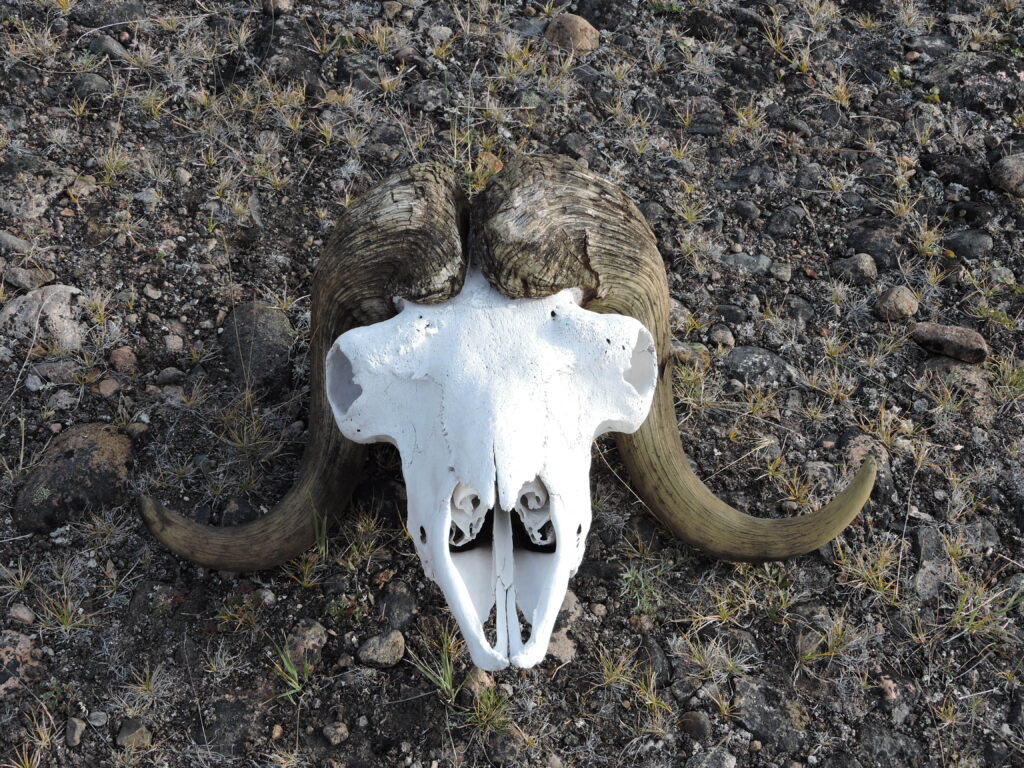
After wishing the other guys good luck, T-Claude, Morten, Enok and I started hiking down the valley toward the big bull. After negotiating a small swamp and a stream, we gained a little elevation to see if we could relocate the bull. He had disappeared, but a few more muskoxen were seen and deemed to be females or young bulls. Once we got to within about a half mile of our last sighting, we spotted the bull on the rolling hills next to the river, looking like a shaggy tank. As we descended toward the river bottom, I spotted something white in the low brush. It was an old bull muskox skull. Morten motioned for me to grab it, and I continued down the hill. Soon, we were on the flats, keeping to the low ground out of sight of the bull. T-Claude had drawn first shot, and he followed along behind Morten. As we crested a small hill, Morten suddenly froze. The bull was down below, next to the river only 50 yards away. During the stalk, we had seen another group of muskoxen on the side of an adjacent mountain with a big old bull. We hastily put together a plan for Enok and I to pursue that bull, while Morten and T-Claude remained in place monitoring the bull by the river. We were going to coordinate our shots, unless their bull started to wander away.
About halfway through our stalk up the mountain, we heard a few shots. Their bull had started to travel up the river and T-Claude was forced to take the shot. Luckily, our muskoxen were far enough away that they didn’t react to the shots. As Enok and I approached the herd from above, we could only see one cow until we crested a small ridge. The big bull was only 80 yards below us. Enok motioned to a boulder 15 yards to our left, and we crept closer. Soon, I was on a perfect rest, waiting for the bull to turn broadside. After waiting for an eternity, he finally turned offering a shot. Thinking back to the instructions from the guides, I bisected the hump and came halfway down the body and squeezed the trigger. The bull immediately dropped and struggled to regain his feet. He eventually stood up, and a final shot put him down for good.
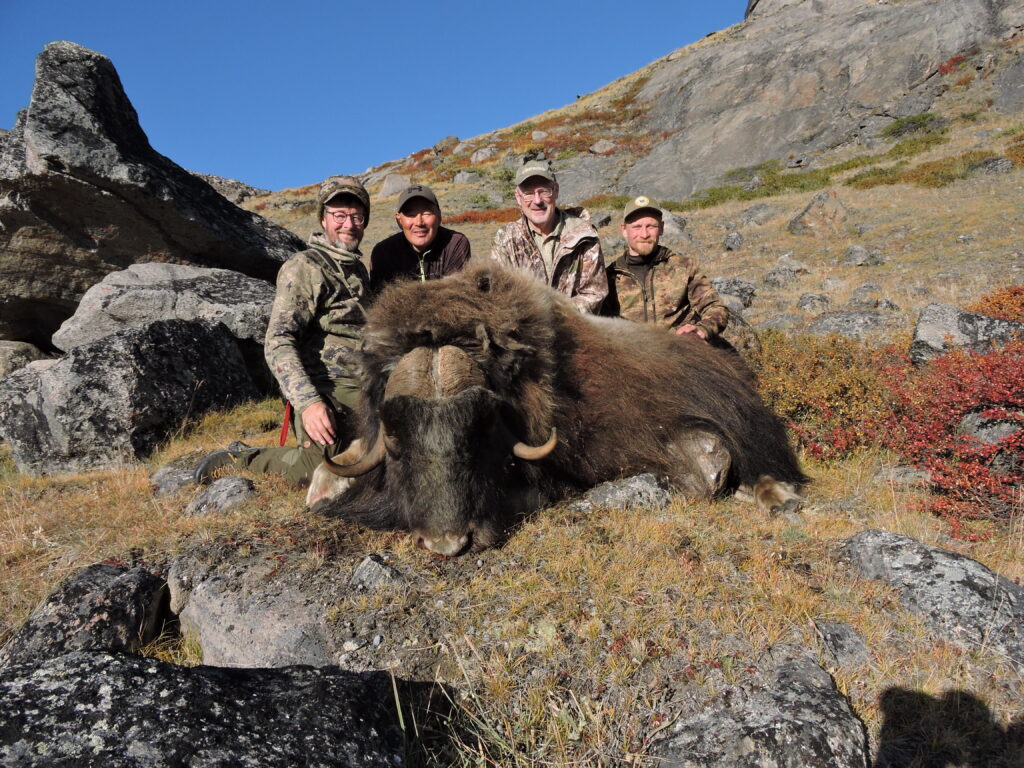
As we approached, the remainder of the herd didn’t appear to be very eager to leave the area. Enok didn’t pressure them, saying that the younger animals can sometimes be the most dangerous. The respect he had for these animals was evident in his measured advance. As the herd finally wandered off, we walked up to the bull. I was impressed by the body size of the bull, much bigger than I had anticipated. He was an old warrior, with heavy bosses and broomed horn tips.
Morten and T-Claude made their way over to us and for the next several hours we skinned and quartered the bulls and hauled everything back to camp. As T-Claude and I were returning to camp, we saw a few ptarmigans and an arctic hare that put his ears back and hid upon our approach. Unfortunately for him, his pure white coat didn’t blend in well with the dark mountain side. We let him think his camouflage was working and continued our trek. Arriving back at camp, we found that Chad and Jody had also been successful on big mature bulls. It was truly an awesome day in the arctic.
Following the events of the first day, the second day of the hunt would be somewhat of a rest day. I took a walk up the valley and got some pictures of ancient Inuit camp sites. It was really impressive that they were able to survive in the harsh environment with primitive tools and weapons. Returning to camp, I helped Morten construct a freezer for the meat, heads and hides.
The third day dawned overcast but pleasant. T-Claude wanted a caribou, and I was able to take another muskox. It was determined that we should head up the mountain beside camp, and over the top. There were several small lakes on the backside of the mountain that could be good for caribou as well as muskox. The mountain looked daunting from the bottom, and if anything, even more daunting as we climbed. The top seemed farther away with every small ridge we crested. I liked the suppressor and bipod on my rifle down in the valley, but less so as I breathlessly ascended. About a third of the way up, T-Claude spotted a muskox below us. It ended up being a small herd with a nice bull. Philip put his spotting scope on it and said that while it was a good bull, he felt like we could do better.

We continued to climb for several hours, seeing some caribou sign near the top, but no caribou. We finally crested the mountain and started to sidehill around to the lakes. We stopped to glass periodically, seeing a few caribou, but no good bulls. Following a quick lunch, we decided to start making our way back to camp. After a bit of walking, events at the beginning of the story began to unfold.
The bull was quartering away from us. Philip said that the side he could see looked very good, being heavy and slightly broomed. We waited patiently for the bull to turn, and when he finally did Philip said that this side looked good as well. The bull turned broadside, and I squeezed the trigger. He lurched forward at the shot.
“Hit him again,” said Philip.
I quickly jacked in another round and took another shot. The bull dropped and rolled out of sight. He came to rest in some rocks below. A few follow up shots, and the bull was down for good. He was massive, with large heavy bosses and heavy horns, showing the wear of many years on the tundra. It was a great ending to an enjoyable day on the mountain.
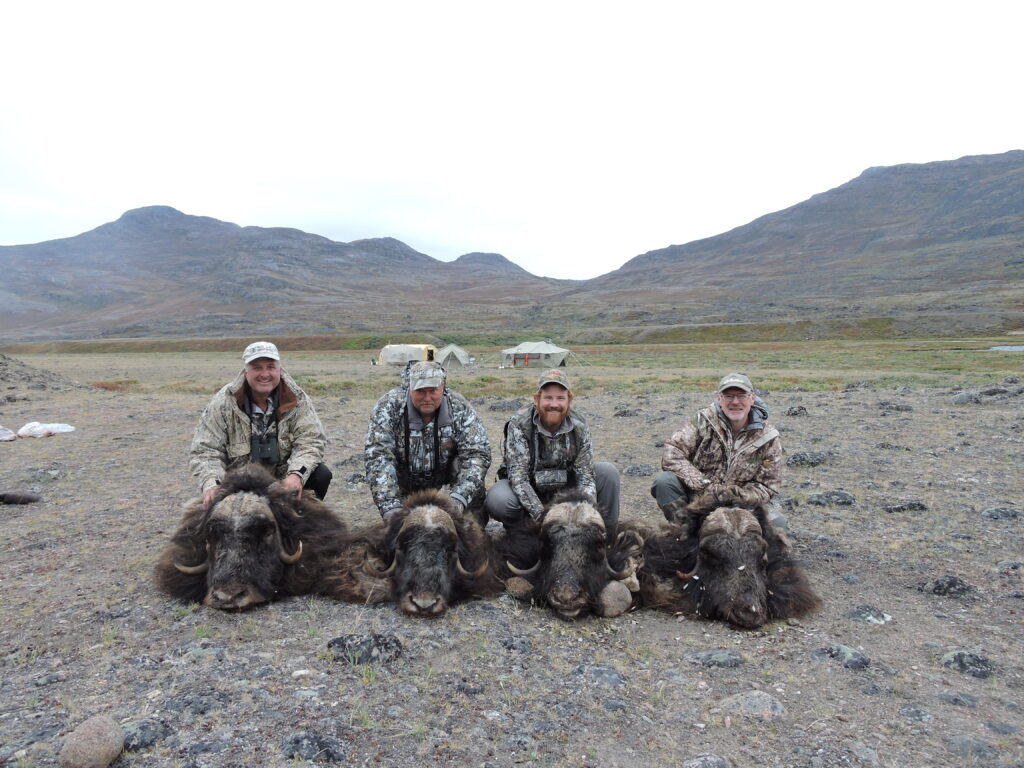
The next day was again very nice. I made a loop along the mountainside, took some pictures and generally just enjoyed the view in every direction. I also took a quick bath in a stream, which provided me with a new definition of the word cold.
A bit of light rain greeted us on Day 5, and it was a lazy start for us. T-Claude and Philip traveled across the river after spotting a good bull caribou, and the rest of us headed for a small lake about four miles up the valley. We spotted quite a few muskoxen, a pair of white-tailed eagles along with their nest, and several muskox skeletons. It was apparent that muskoxen were truly dying of old age out there. As a bonus, the lake was also full of Arctic char, providing some excellent fare for the table. Upon our return to camp, we found that T-Claude had taken a very nice caribou.
The last day of the hunt dawned warm and foggy. When the sun started to poke through, the Louisiana guys did some small-game hunting, and I made another loop just to see what I could see. A few muskoxen made an appearance along with some hares and ptarmigan. It was a great last day. Except that it wasn’t…
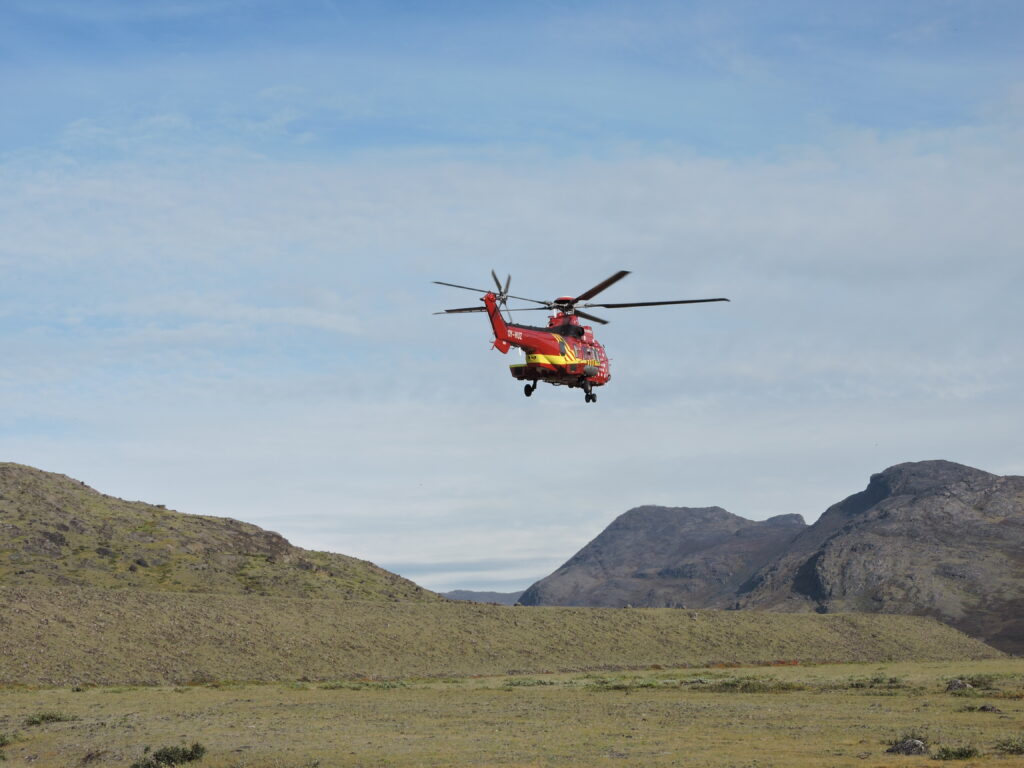
The next morning, we were all packed and ready for the helicopter that was due to arrive in midmorning. We spotted the helicopter flying toward the other camp. Sometime later we heard it headed in our direction. Much to our surprise, it flew right over our heads. Apparently, they had received some sort of an emergency call. The end result was that we ended up spending a few extra days in Greenland. It’s not the first time that type of thing has happened to me with hunts in faraway places. It’s always best to expect the unexpected and be flexible with your schedule.
In all, it was truly a great adventure. My thanks to the Feldmann’s and their excellent staff for making it a trip I’ll remember for the rest of my life.
Glenn Bingham is a Life member who lives in northwest New York State.

